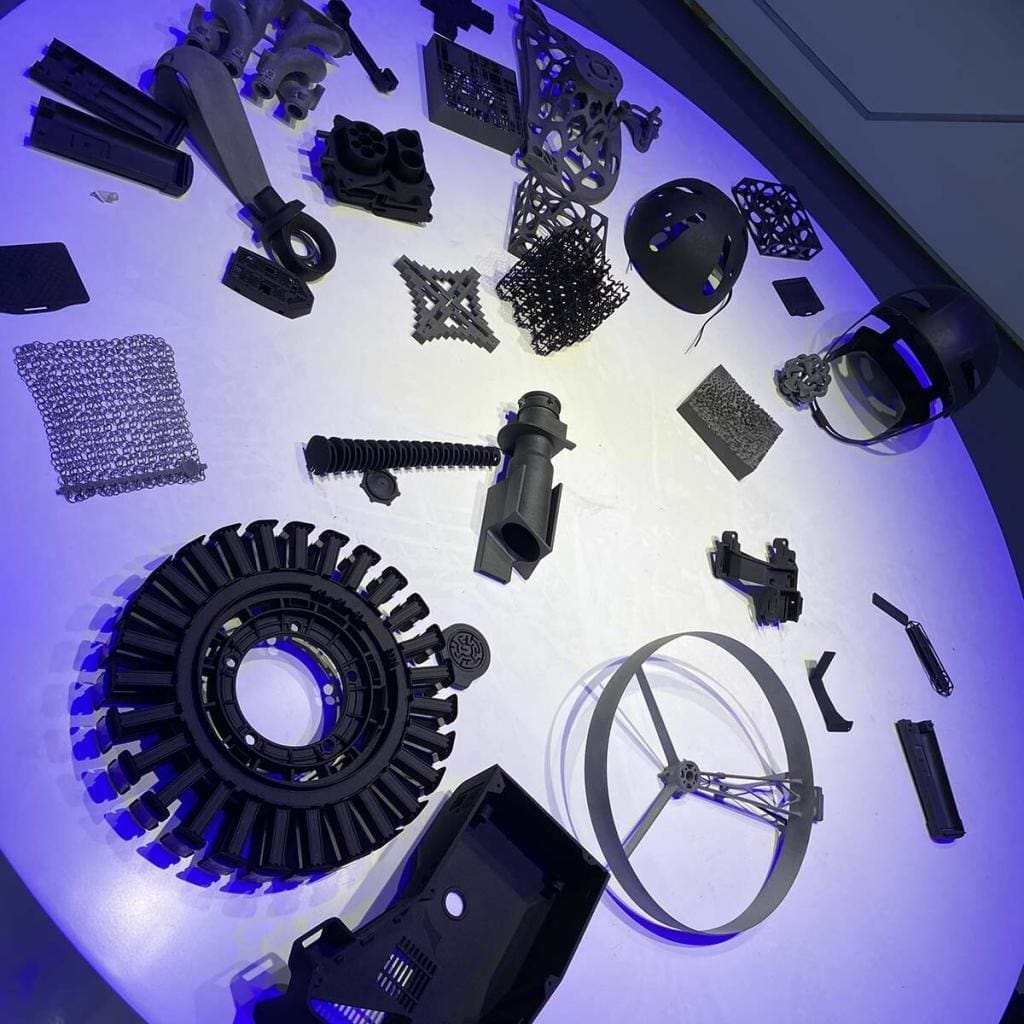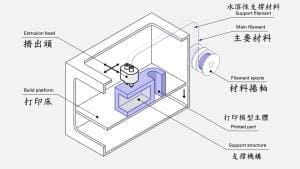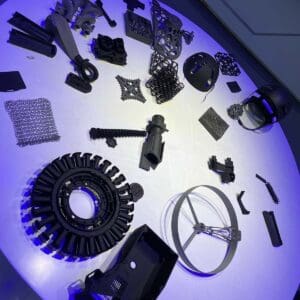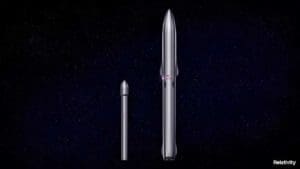5 artifacts using 3D printing and 3D scanning. Over the past decade,3D Printing&3D Scan-technology has had a significant impact on archaeology, providing new methods for historical research and the preservation of artifacts. These technologies not only open up new ways of exploring and understanding history, but also allow people to interact with it in a hands-on way. From reconstructions of artifacts to immersive models of ancient buildings, advances in 3D technology have opened up new ways to explore history. Today, it is not only about preserving history, but also about protecting history, "restoring" cultural relics, and breathing new life into old stories. We present some of the most fascinating 3D printed artifacts from archaeology of the decade:
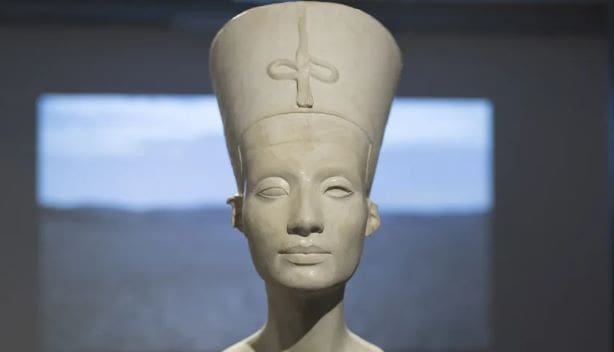
1.Reviving the Bull -修復“公牛”

In 2024, Italy provided Iraq with a 3D printed version of the Bull of Nimrud, an ancient Assyrian statue made in the 9th century BC and destroyed by ISIS in 2015. After the attack, the restoration team, led by Florentine expert Nicola Salvioli, studied photos and videos, made models out of polystyrene, and then used 3D printing technology and fiberglass materials to create full-size replicas. The replica, painted with stone powder to look more like the original, was exhibited at the Colosseum in Rome and at UNESCO headquarters in Paris before being placed at the entrance to the Basra Museum. This gift to Iraq is a testament to the power of 3D printing to bring back lost cultural treasures.

2. Rebuilding Le Stryge
After the devastating fire at Notre Dame Cathedral in Paris in 2019, stone 3D printing specialist CONCR3DE suggested using the rubble and ash of the cathedral to create a new 3D printed powder. To demonstrate the potential of its technology, CONCR3DE 3D printed "Le Stryge" (also known as "vampire") using a mixture of limestone and ash. This famous sculpture, designed by Viollet-le-Duc and once located in the gallery of Notre Dame, is an iconic gargoyle that recalls a fantastical creature, a vampire with elements of a woman and a dog.

While "Le Stryge" and the Chimeras gallery did not suffer the same level of damage as the cathedral's roof and spire, CONCR3DE's 3D-printed statues-demonstrate the potential of its technology, proving that it is crucial to rebuilding parts of ancient buildings like Notre Dame. Their innovative use of 3D printing shows how it can help restore historic monuments and fuse the past and future to preserve cultural heritage.

3. Pharaoh Head

Awareness of King Tut deepened when paleoart sculptor Gary Staab and Materialise collaborated to create an exact 3D replica of the Pharaoh's head. The project, initiated by National Geographic and the Department of Art Exhibitions for the Discovery Times Square exhibition, used 3D scanning and 3D printing technology to materialize the converted CT scans into detailed 3D models, preserving the intricate details of King Tut's bone structure. Then, using its in-house software and-LCD Resin 3D printer, a lightweight, high-precision model was made. The final details were done by Gary Saab, who used meticulous colours and textures to make the replica as close as possible to the original, giving a unique glimpse of what the ancient king looked like behind his iconic mask.

4. Sunken Secrets
In 1628, the Swedish warship Vasa sank with the loss of nearly 30 lives and sank to the bottom of the Baltic Sea, where it lay quietly for more than three centuries until it was raised in 1961. Among the items recovered was the skeleton of a young woman named Gertrude. Artist Oscar Nilsson has brought her life and appearance back to life through 3d printing technology. Nelson used DNA and bone analysis to create an elaborate, high-precision facial reconstruction of a blonde, blue-eyed woman.

The reconstruction offers a glimpse of the battleship Vasa, which sank on its maiden voyage after military leaders pushed by Sweden's King Gustavus Adolphus ignored its balance problems. Gertrude's remains were initially mistaken for those of a man, but after forensic analysis, were identified as female. It was then reconstructed, a process that required 3D printing to create a model of her skull, on which Nelson carved facial features. Recreating Gertrude's face through a replica of the costume found among her remains reveals a historical tragedy while demonstrating how art, science, technology and history can come together to understand the history of humanity.

5.Nefertiti
Nora Al-Badri and Jan Nikolai Nelles made headlines with their project "Another Nefertiti". In a bold move, they used a hacked Kinect sensor to secretly scan the famous bust of Queen Nefertiti at the Neues Museum in Berlin and then released the high-quality 3D data to the public, sparking debate about the authenticity and quality of their 3D scans. Skeptics have questioned the high-resolution scanning, arguing that it is too advanced for the method they claim to use, but the artists have refused to reveal their technique, arguing that it will only lead to more speculation. Despite the controversy, their work has sparked broad discussions about cultural ownership, access to historical artifacts, and the role of digital technology in art and archaeology.

The original-Nefertiti-statue, created around 1345 BC, remains outside Egypt because German archaeologists took it and kept it in Germany more than a century ago, sparking an ongoing dispute over its rightful location. For the artists, the display of the 3D-printed Nefertiti statue in Cairo symbolises the return of this artifact, challenging established views of cultural ownership. Although the 3D printed busts have been called "data hacks" or "art heists," it has sparked debate about the ownership of these important artifacts, while also showing how 3D technology can change the connection between humans and historical artefacts. Through 3D printed artifacts, Al-Badri and Nelles show how digital technology can open the door to historic treasures for everyone.

5 artifacts using 3d printing and 3d scanning. Over the past decade, 3D printing and 3D scanning have not only changed the way we see history, but also the way we think about it. Each project, whether it's giving a face to a forgotten person or returning a treasure, brings a piece of history into the present. Humanity can preserve history through the fusion of art, science and technology, so that these stories and the lessons they carry are not lost to time.
Source: 南極熊

